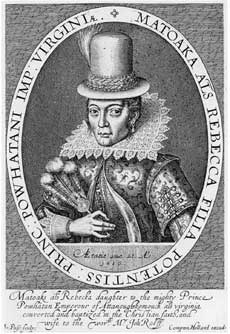The True Story of Pocahontas (Not G Rated)
The True Story of Pocahontas (Not G Rated)
 |
| Disney's Portrayal of Pocahontas (Pinterest) |
 |
| A realistic drawing of Pocahontas (Stories of our ancestors) |
 |
| Pocahontas saving John Smith in the Disney movie (Pinterest) |
Many people know the love story of Pocahontas and John Smith. They meet by a waterfall, wind blowing around them, and it was love at first sight. They could not completely understand each other at first but then made introductions with hand motions in their own languages. This was Disney's way of explaining a language barrier. For the rest of the movie, the Native Americans and the Colonists could communicate flawlessly. In reality, the Native Americans and the Colonists would not be able to understand one another. Also, just to clarify Pocahontas was about 10 years old and John Smith was about 27 years old. This is quite a large age gap for romance. This is most likely the reason Disney portrayed Pocahontas as a woman. If they portrayed Pocahontas as her true age, Disney would receive a lot of backlash.
According to the Disney film when Kococum sees John Smith and Pocahontas together, Kococum attacks Smith. Kococum is then shot by Thomas and dies. This is yet another historical inaccuracy. Kococum was not just Pocahontas' suitor, he was her husband. Pocahontas and Kococum even had a baby together. Also, Kococum was not shot by Thomas, but he was attacked in his home by a group of men and then killed. In the movie, after Kococum was killed, John Smith was captured. He was going to be executed by Pocahontas's father (the chief) by beating his head with a club. This type of punishment was only used on the Native American's in their own tribe. For Colonists, they would have used torture. In the film, right when John Smith is about to be killed, Pocahontas flies out of nowhere and puts her head on John Smith's head to save him. She then tells her father that she loves John Smith. This scene from Disney's movie is from one of John Smith's accounts. His first account of his voyage in 1608, describes how he was treated very kindly. Very interestingly, Smith's account had no mention of Pocahontas. However, in 1624, he wrote a new account of his voyage. Somehow his past happy and kind description of the Native Americans turned into the Native Americans trying to beat his head with clubs. That took a quick and unexpected turn. Smith then describes how Pocahontas (the King's dearest daughter) saved his life by putting her head onto his own. It is very interesting how he "forgot" to include this event in his original account. Another interesting detail is that when John Smith wrote, "The General Historie of Virginia," any person that could have backed up John Smith had passed away. There was no longer a person to confirm or reject Smith's account. Later on in his life, almost the exact event took place in Turkey. A princess had saved his life very similarly to how Pocahontas saved his. Wow, John Smith is one lucky guy. Or he is a liar. That option seems much more likely. This means Disney's Pocahontas is completed based off lies and is not historically accurate.
 |
| John Smith demanding the Native Americans for food (National Park Service) |
 |
| "Rebecca"- Pochaontas's new name (National Park Service) |
Disney had left out many true events that would have turned this G rated movie into an R rated movie. Genocide and disease were forced onto the Native Americans by the Colonists. Even John Smith, himself, would terrorize the Native Americans by holding a gun to the Native leaders' heads so they would give him their food. He was not the heroic, kind, and loving man Disney portrayed him as. Later in the movie, John Smith jumps in front of Pocahontas's dad (the chief) and takes the bullet in his stomach. In reality, John Smith was not saving the Natives lives, he was taking them. As Disney's film nears the end, John Smith goes home because of the bullet wound. In real life, he suffered a gun powder burn in his leg. This soon healed but he was then sent home because he was fired. So John Smith did not return to England because of a heroic act; he was simply fired. After John Smith returned to England, things take a bad turn for Pocahontas. She was kidnapped by the Colonists and forced onto the boat where she would take the journey to England. In this process, the Colonists took her husband (murdered), her baby, her family, her tribe, her homeland, and ultimately, her happiness away from her. During her captivity, Pocahontas was raped. While she was in England, she married John Rolfe. Pocahontas was also forced into Christianity, had to wear the English clothing, and even change her name to Rebecca. Around the age of 21, Pocahontas suffered an unknown illness and died. As you can see, Pocahontas never received her happily ever after like she did in the Disney film.
 |
| Monument of Pocahontas (Virgina Association of Counties) |
Works Cited
Mansky, Jackie. "The True Story of Pocahontas." Smithsonian. Accessed 11April 2019, https://www.smithsonianmag.com/history/true-story-pocahontas-180962649/.
Stebbins, Sarah. "Pocahontas: "Her Life and Legend." National Park Service. Accessed 11 April 2019, https://www.nps.gov/jame/learn/historyculture/pocahontas-her-life-and-legend.htm.
"Pocahontas." History. Accessed 11April 2019, https://www.history.com/topics/native-american-history/pocahontas.
"Pocahontas." National Women's History Museum. Accessed 11 April 2019, https://www.womenshistory.org/sites/default/files/document/2018-08/Pocahontas%20Cloze%20Note%20Presentation.pdf.
Schilling, Vince. "The True Story of Pocahontas: Historical Myths Versus Sad Reality." Indian Country Today. Accessed 11 April 2019, https://newsmaven.io/indiancountrytoday/archive/the-true-story-of-pocahontas-historical-myths-versus-sad-reality-WRzmVMu47E6Guz0LudQ3QQ/.
Smith, John. "A TRue Religion of such occurrences and accidents of note, as hath happened in Virginia." (1608)
Smith, John. "The General Historie of Virginia." (1624).
Smith, John. "A TRue Religion of such occurrences and accidents of note, as hath happened in Virginia." (1608)
Smith, John. "The General Historie of Virginia." (1624).

Comments
Post a Comment